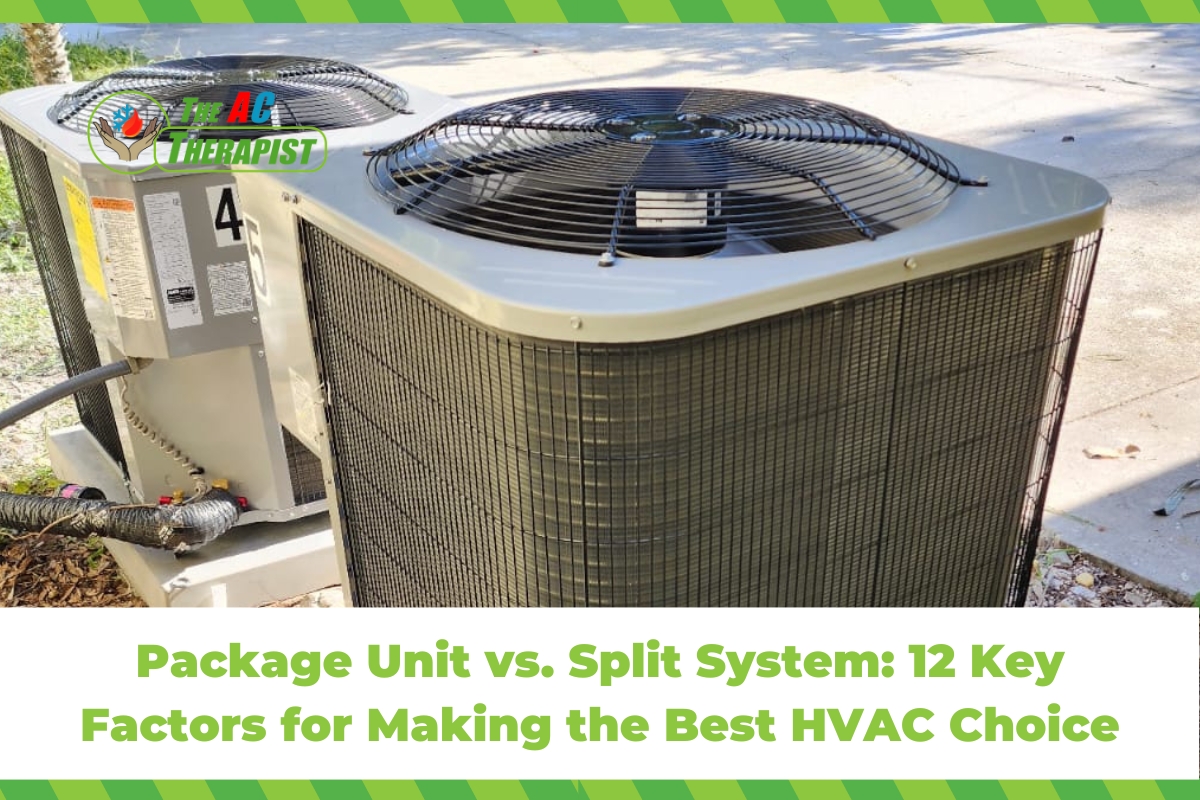Package Unit vs. Split System: 12 Key Factors for Making the Best HVAC Choice
When it comes to ensuring optimal indoor comfort, the decision between a package unit and a split system holds significant importance. Both options offer unique advantages, making the “Package Unit vs. Split System” debate a central consideration in the world of HVAC. In this comprehensive guide, we’ll delve into the twelve key factors that can guide you toward the best HVAC choice for your specific needs.
1. Space and Layout: When evaluating your options in the context of “Package Unit vs. Split System,” it’s crucial to assess the available space both indoors and outdoors. Package units stand out as compact and convenient solutions specifically designed for limited spaces. On the other hand, split systems showcase their adaptability by offering greater installation flexibility.
2. Noise Levels: Consider your tolerance for indoor noise. Split systems excel in providing quieter indoor operation by isolating noisy components outside, making them ideal for homes and offices that require peaceful environments.
3. Customization and Zoning: If you seek precise temperature control in different areas, split systems shine. Their zoning capabilities allow you to cool only the zones that are in use, potentially leading to energy savings.
4. Installation Complexity: When deliberating on the installation process within the context of “Package Unit vs. Split System,” it’s essential to evaluate your willingness to manage installation intricacies. Package units offer straightforward installations due to their consolidated design, making the process relatively streamlined.
In contrast, split systems might involve slightly more complex setups due to the separation of indoor and outdoor units.
5. Energy Efficiency: Compare the energy efficiency of both options. Split systems, with their component separation, often have the upper hand due to enhanced technology integration and zoning benefits.
6. Maintenance Considerations: Factor in long-term maintenance. Package units have the advantage of simplified maintenance with all components in one unit, while split systems might require more effort due to separate indoor and outdoor units.
7. Initial Costs: In the financial realm of “Package Unit vs. Split System,” it’s essential to strike a balance between your budget and the initial costs of each option. Package units typically come with lower upfront expenses, making them an attractive choice for those aiming to minimize initial investment. In contrast, split systems might involve higher installation costs due to the separate indoor and outdoor components. This financial consideration plays a significant role in the overall decision-making process, influencing the affordability and long-term outlook of your chosen HVAC solution.
8. Long-Term Cost Analysis: Consider the total cost of ownership. While package units might have lower initial costs, split systems‘ efficiency, and zoning capabilities can lead to lower operating costs in the long run.
9. Design and Aesthetics: When assessing the aesthetic implications of your choice between “Package Unit vs. Split System,” it’s crucial to evaluate the impact on your space’s aesthetics. Package units are typically installed outdoors and might be less noticeable, blending with the exterior of your property. On the other hand, split systems’ indoor units demand careful placement within your living spaces.
10. Environmental Impact: Prioritize environmentally friendly options. Ensure that the chosen system uses refrigerants with low Global Warming Potential (GWP) to minimize ecological effects.
11. Maintenance and Repairs: Think about ease of maintenance and repairs. When considering the “Package Unit vs. Split System” dilemma, package units’ centralized design can simplify these tasks, offering efficient access to all components in one unit. On the other hand, split systems provide not only better indoor noise control and customization but also the need for maintenance across both indoor and outdoor units.
12. Professional Consultation: Seek guidance from HVAC professionals. Their expertise can help you navigate the intricacies of the “Package Unit vs. Split System” debate, aligning your choice with your specific requirements.
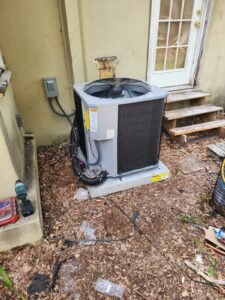
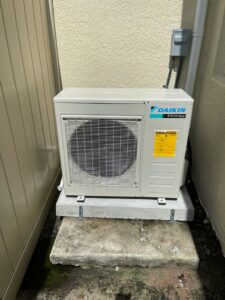
Understanding Package Units
A package unit, often referred to as an “all-in-one” system, houses all its essential components within a single outdoor unit. This compact design includes the compressor, condenser, evaporator, and sometimes even heating elements. Package units are often used in commercial settings or homes with limited indoor space, where a centralized system is preferred for ease of installation and maintenance. The simplicity of design can lead to reduced maintenance costs and streamlined service.
Advantages of Package Units
- The Simplicity of Installation: The single-unit design of package units simplifies installation, requiring minimal indoor space.
- Compact Footprint: Ideal for smaller homes or commercial spaces where space is limited.
- Cost-Effective Maintenance: The centralized design makes maintenance and repairs more straightforward, potentially reducing long-term costs.
Disadvantages of Package Units
- Noise Levels: As all components are housed in a single unit, noise levels can be higher compared to split systems.
- Limited Zoning: Difficulty in providing separate temperature control for different zones within a building.
- Efficiency Challenges: The all-in-one design can limit the flexibility in optimizing energy efficiency.
Exploring Split Systems
A split system consists of two main components: an indoor unit (evaporator and blower) and an outdoor unit (compressor and condenser). The indoor unit is typically installed within the living space, while the outdoor unit is placed externally. Split systems are the more common choice for residential applications, offering better indoor noise control and the flexibility to customize cooling for different areas.
Advantages of Split Systems
- Indoor Noise Control: Placing noisy components outside enhances indoor comfort by minimizing noise levels.
- Zoning Possibilities: Separate units for different zones allow precise temperature control and energy efficiency.
- Design Flexibility: Various indoor unit types and placements offer more design options for interior spaces.
Disadvantages of Split Systems
- Installation Complexity: Split systems generally involve more intricate installation due to multiple components.
- Higher Initial Costs: Installation expenses can be higher compared to package units due to the separate components.
- Maintenance Complexity: With components spread out, maintenance and repairs can potentially be more challenging.
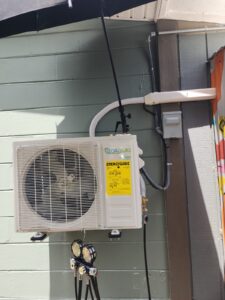
Efficiency and Energy Considerations
Both package units and split systems offer varying degrees of energy efficiency based on factors such as system size, design, and technology. Manufacturers have made significant strides in improving the energy efficiency of both types of systems. It’s essential to consider factors like SEER (Seasonal Energy Efficiency Ratio) ratings and EER (Energy Efficiency Ratio) when evaluating the efficiency of your chosen HVAC system.
Choosing the Right System
Selecting the appropriate HVAC system depends on several factors:
- Space and Layout: Consider the available indoor and outdoor space, as well as the layout of your property.
- Zoning Needs: If you require different temperature settings for various zones, a split system might be more suitable.
- Noise Tolerance: Evaluate your tolerance for noise. If quiet indoor operation is a priority, a split system could be beneficial.
- Budget: Assess the initial costs of installation, as well as potential long-term maintenance expenses.
- Energy Efficiency Goals: Determine your energy efficiency goals and compare the SEER and EER ratings of different units.
Installation and Maintenance Considerations
Package Unit Installation and Maintenance: Package units are known for their straightforward installation process. Since all the components are housed in a single unit, the installation involves connecting the necessary ductwork, electrical connections, and refrigerant lines. This simplicity can lead to quicker installation times and potentially lower labor costs.
Maintenance for package units is also relatively uncomplicated. HVAC technicians can access all components in one location, making inspections, cleaning, and repairs more efficient. This can result in shorter service visits and reduced downtime. Regular maintenance tasks include cleaning or replacing air filters, checking refrigerant levels, and inspecting electrical connections.
Split System Installation and Maintenance: Installing a split system involves placing the indoor unit inside and the outdoor unit outside, then connecting them via refrigerant lines, electrical wiring, and drain lines. The indoor unit is often mounted on a wall or ceiling, requiring precise positioning and appropriate support. The complexity of installation can vary based on the indoor unit’s location and the distance between indoor and outdoor components.
Maintenance for split systems can be slightly more involved due to the separation of components. Technicians need to access both the indoor and outdoor units, which may require more time and effort compared to package units. However, split systems offer the advantage of better indoor noise control, making them a preferred choice for those who prioritize quieter operations.
Long-Term Cost Analysis
When evaluating the long-term costs of package units versus split systems, several factors come into play:
- Initial Costs: Package units generally have lower upfront costs due to their simpler design. Split systems often involve higher installation expenses due to the need for separate indoor and outdoor units.
- Operating Costs: While split systems might have slightly higher upfront costs, their efficiency and zoning capabilities can lead to lower operating costs over time. Zoning allows you to cool specific areas, reducing the energy consumption of cooling unused spaces.
- Maintenance Costs: When analyzing the maintenance aspect in the context of “Package Unit vs. Split System,” it’s evident that package units can have an advantage in terms of maintenance costs due to their centralized design. However, it’s important to note that the efficiency gains of split systems might offset any additional maintenance expenses. This dynamic adds an additional layer of consideration to the decision-making process between these two HVAC options.
Package Unit vs. Split System
When it comes to HVAC solutions, the choice between a “Package Unit vs. Split System” is a pivotal decision that homeowners and businesses face. Both of these options come with their own set of advantages and considerations, making it essential to weigh their differences before making an informed choice.
Package units are known for their compact design and convenience. In the ongoing debate of “Package Unit vs. Split System,” package units stand out as all-in-one systems that house all their essential components within a single outdoor unit. This setup is particularly suitable for spaces where indoor space is limited. A package unit’s installation process is streamlined due to its consolidated design, often resulting in lower labor costs.
On the other hand, split systems offer a more versatile approach. The “Package Unit vs. Split System” debate extends to residential settings, where split systems gain traction due to their precision and quiet operation. Comprising indoor and outdoor units, split systems ensure that noisy components are kept outside, providing a peaceful indoor environment. The ability to customize cooling in different zones is a significant advantage of split systems. This zoning capability is often a decisive factor in the “Package Unit vs. Split System” deliberation, allowing homeowners to achieve energy efficiency by cooling only occupied spaces.
Energy efficiency is a critical factor when comparing “Package Unit vs. Split System.” Both options have seen advancements in this regard. Package units have varying levels of efficiency, often indicated by SEER ratings. However, the compact design of package units might pose challenges in integrating advanced efficiency technologies. On the other hand, split systems leverage their component separation for enhanced energy-saving features, offering better efficiency and personalized comfort.
Installation and maintenance are integral aspects of the “Package Unit vs. Split System” decision. Package units shine in terms of simplified installation due to their consolidated structure. This streamlined setup potentially leads to shorter installation times and reduced labor costs. Maintenance is similarly convenient, as all components are housed within a single unit, enabling efficient servicing.
However, split systems provide an alternative perspective in terms of installation and maintenance. While they offer greater customization and energy efficiency, the separation of indoor and outdoor units can result in a more complex installation process. Maintenance for split systems can also involve more effort, as technicians need to access both indoor and outdoor components. Despite these considerations, the benefits of improved efficiency and quieter indoor operation often sway the “Package Unit vs. Split System” deliberation in favor of split systems.
In the realm of environmental considerations within the “Package Unit vs. Split System” discussion, both options come under scrutiny for their choice of refrigerants. Opting for environmentally friendly refrigerants with low Global Warming Potential (GWP) is crucial to minimize the ecological footprint of HVAC systems.
In conclusion, the choice between “Package Unit vs. Split System” is a multifaceted decision that requires careful consideration. Whether it’s the convenience and compactness of package units or the precision and customization of split systems, understanding their unique features and evaluating factors like energy efficiency, installation complexity, and noise control are essential. Consulting HVAC professionals can provide tailored guidance that ensures your choice aligns with your specific requirements, leading to optimal indoor comfort and efficiency for the long term.
The “Package Unit vs. Split System” dilemma extends beyond a simple choice. It’s a multifaceted decision that demands consideration of various factors. The compact convenience of package units competes with the versatile precision of split systems. Through careful evaluation of space, noise preferences, customization needs, installation dynamics, and energy efficiency goals, you can navigate this decision maze.
By optimizing your choice based on these twelve key factors, you can strike a harmonious balance between comfort, energy efficiency, and budget considerations. Remember that the ideal selection aligns with your unique requirements, ensuring optimal indoor conditions for years to come. So, dive into the world of “Package Unit vs. Split System” armed with knowledge and make a decision that resonates with your aspirations.
In the end, the “Package Unit vs. Split System” deliberation is an exercise in balance. Package units offer the allure of compact convenience, while split systems excel in customization and energy efficiency. By weighing these twelve key factors – including space optimization, noise control, customization, installation dynamics, energy efficiency, maintenance, costs, environmental responsibility, aesthetics, and professional consultation – you can navigate this decision landscape with confidence.
As you consider the twelve factors, remember that the optimal HVAC choice aligns with your unique requirements. It’s a choice that holds the power to elevate your indoor comfort, minimize energy consumption, and create an environment that suits your lifestyle. So, embark on this journey of “Package Unit vs. Split System” equipped with knowledge, and make a choice that resonates with your aspirations and priorities.
When it comes to making the right HVAC choice, The AC Therapist is your reliable partner. We specialize in helping you navigate the “Package Unit vs. Split System” dilemma, offering expert insights and personalized solutions. With a deep understanding of the Tampa Bay area’s climate and cooling needs, we’re equipped to guide you through the intricacies of these options.
In conclusion, this comprehensive blog has shed light on the crucial considerations within the “Package Unit vs. Split System” dilemma. The AC Therapist understands the significance of this choice, and as your local HVAC contractor in the Tampa Bay area, we’re dedicated to helping you make an informed decision. Whether you’re prioritizing space optimization, noise control, customization, energy efficiency, or any other key factor, The AC Therapist is your partner in navigating this complex decision-making process.
With our expertise in air conditioning services like AC repair, installation, and maintenance, as well as specialties such as mini split installation and heating services, we are equipped to guide you toward an HVAC choice that aligns seamlessly with your unique preferences. Trust The AC Therapist to be your source of knowledge and support as you embark on the journey of “Package Unit vs. Split System,” ensuring optimal indoor comfort, energy efficiency, and satisfaction for years to come.
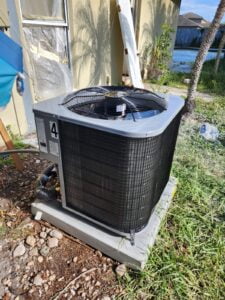
The AC Therapist’s Guide to HVAC Choice – Package Unit vs. Split System
As we wrap up our exploration of the “Package Unit vs. Split System” debate, it’s crucial to emphasize that making the right HVAC choice is paramount. The AC Therapist, your trusted local HVAC contractor in the Tampa Bay area, is here to guide you through this decision-making journey. With expertise in air conditioning services such as AC repair, installation, and maintenance, as well as specialties like mini split installation, heating services, ductwork, and more, The AC Therapist understands the unique cooling needs of the region.
When contemplating the choice between a package unit and a split system, it’s essential to consider factors that align with your specific requirements. The AC Therapist’s extensive knowledge can help you navigate the nuances of these options, considering crucial aspects like space optimization, noise control, customization, energy efficiency, and environmental responsibility.
By choosing The AC Therapist as your HVAC partner, you gain access to professional consultation that goes beyond the technicalities. It’s about creating an environment that ensures your comfort, energy efficiency, and long-term satisfaction. With the expertise of The AC Therapist, you’re not just selecting an HVAC solution; you’re investing in a tailored approach that meets your needs and enhances your quality of life.
This insightful blog delves deep into the critical decision of “Package Unit vs. Split System” in the realm of HVAC solutions. The comparison between these two options resonates throughout the HVAC industry, prompting homeowners and businesses to consider various factors before making an informed choice. Exploring the advantages and considerations of “Package Unit vs. Split System,” this blog aims to provide a comprehensive guide for those seeking optimal indoor comfort and energy efficiency.
The deliberation between package units and split systems is not just about cooling; it’s about finding a solution that seamlessly fits the specific needs of each setting. With “Package Unit vs. Split System” at the forefront of our discussion, this blog offers insights that can illuminate the path toward the best HVAC decision. Whether you prioritize compact convenience or customization capabilities, this exploration is designed to empower you with knowledge and confidence in your choice between “Package Unit vs. Split System.”

